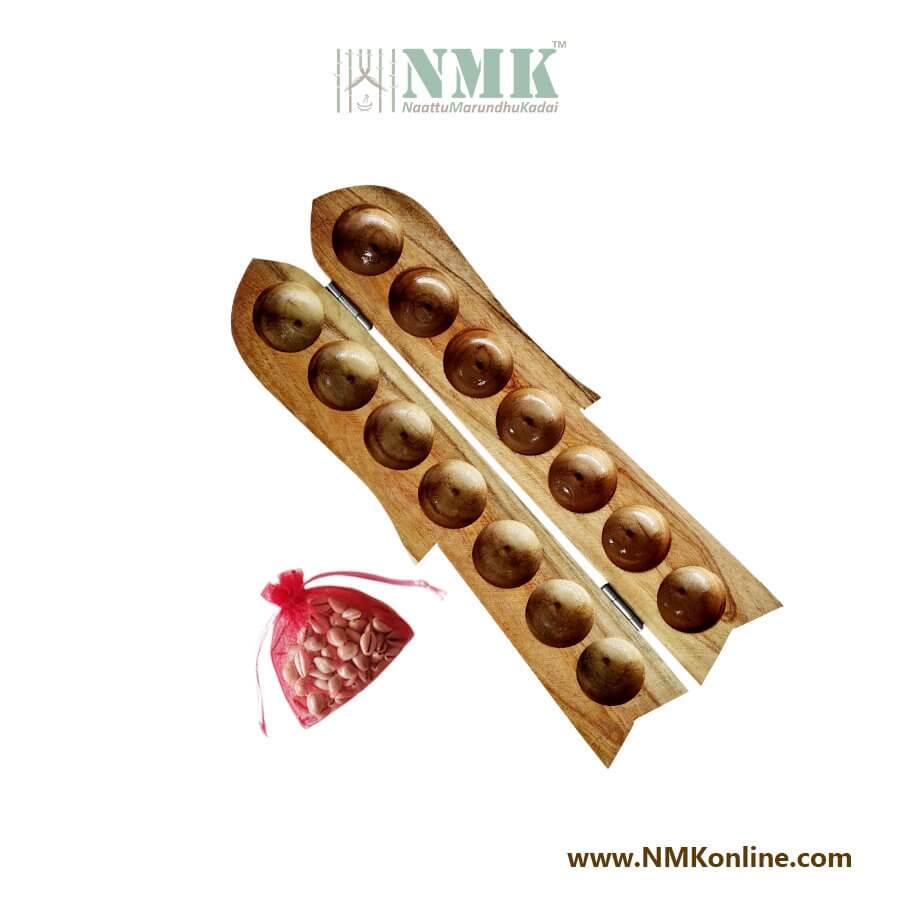Pallanguzhi Fish model
For Children 5 Years and above
Pallankuzhi is played by dropping shells into pits on a board, This has a very old history. This is an entertaining way to improve mathematical, Memory Skills, Motoring skills, Dynamic thinking, etc
Brand:
NMK
Tax Info: Tax included.Tags:
Buy Pallanguzhi online, Fish pallankuzhi, Wooden pallanguzhi, Traditional Board Games Online, Buy Pallanguzhi online. Pallanguzhi- Fish model


Description about Pallanguzhi (பல்லாங்குழி):-
- The game has fascinated researchers keen on unraveling its many anthropological and social aspects. Scholars have conducted researches on the game to find out the various skills of students at various levels.
- Pallanguzhi is mostly played by Tamil women, both in Southern India and Sri Lanka.
Package Specification For Pallanguzhi (பல்லாங்குழி):
|
Model Name |
Pallanguzhi –Fish model |
|
Dimensions |
18*7 inches |
|
Sales Package |
Natural wooden board, Cowrie shells 72 Nos with pouch |
|
Country of Manufacture |
India |
|
Number of Players |
2 players |
Description About Pallanguzhi (பல்லாங்குழி) - Fish model
- The board has 14 cups, each player controls seven cups, and each cup holds 5 cowry shells.
How to Play the Pallanguzhi (பல்லாங்குழி):
- Five cowry shells are placed in each cup. The player starting first picks up the shells from any of her holes and, moving anti-clockwise, places one shell in each hole. If she reaches the end of her cups she goes on the other side of the board. When the player drops her last shell, she takes the shells from the next cup and continues placing them in this way. If the last shell falls into a cup with an empty cup following it, the shells in the cup following the empty cup, are captured by the player.
- That player then continues play from the next cup containing shells. If the last shell falls into a cup with two empty holes beyond, she captures no shells and her turn is over. The next player continues to play in the same way.
- If, after having a shell dropped into it if a cup contains four shells which are called Pasu in Tamil, those shells become the property of the player to whom the concern cup belongs. The round is over when no shells remain.
- Once the first round is over players take the shells from their stores and fill as many of their holes as possible with 5 shells each.
- The winner will have a surplus of shells that are kept in her store. The loser of the first round will be unable to fill all of her holes. These unfilled holes are marked as rubbish holes., and it's called Thokkam in Tamil.
- In the next round, play continues as before, but without the rubbish holes being included and the player who went first in the previous round going second. During the game, if a player has enough shells to fill any of her rubbish holes, they are again used during play. The game is over when a player is unable to fill any cups with five shells at the end of around.
The objective of the Game Pallanguzhi (பல்லாங்குழி):
- Kids develop motoring skills in a big way, Memory inducer, and Improve mathematical skills to a great extent.



